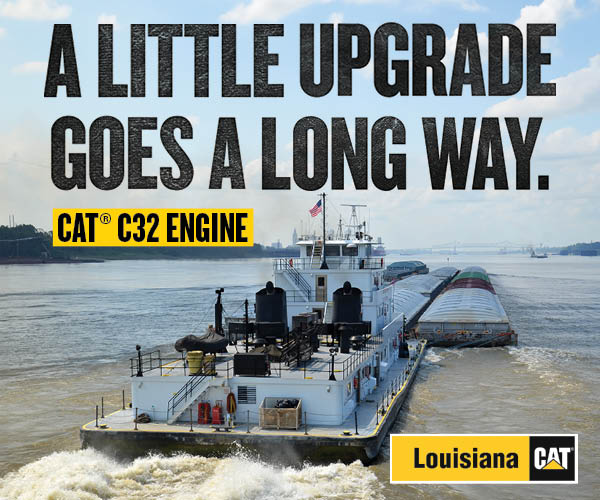Custom Compounds Highlights Safety Of L-44 Degreaser
When Arnold, Mo.-based Custom Compounders’ L-44 line of degreasers debuted between 2007 and 2009, most other degreasers in use were composed of ingredients that posed potentially serious consequences for workers. Today, even with growing trends for safety, some maritime companies still purchase hazardous degreasers.
Degreasers that contain caustics (sodium or potassium), high levels of metasilicates or butyl-based glycol ethers and have a pH of 13 or14 are hazardous degreasers. For more on this, see section 3 and section 9 of a safety data sheet. Skin exposures to this kind of degreaser can cause chemical burns, and eye exposures can cause irreparable harm, even to the extent of partial or total blindness. The problem lies with the high level of alkalinity inherent with the use of caustics and metasilicates.
According to the American Academy of Ophthalmology (AAO), “On exposure, highly alkaline degreasers constitute an immediate ocular emergency, which can cause extensive damage to the ocular surface and anterior segment, leading to visual impairment and disfigurement. Early recognition and treatment ensure the best possible outcome for this potentially blinding condition.”
When L-44 debuted around 16 years ago, Custom Compounders’ goal was to provide the maritime industry with EPA- certified degreasers and to demonstrate that the company’s product claims were valid. In accordance with the company’s “Safer Choice” partnership agreement with the EPA, signed in December 2009, Custom Compounders commissioned independent laboratory studies to substantiate all L-44 product claims. In other words, the company didn’t just make up the promotional language for L-44. All claims have been validated by independent labs.
Custom Compounders went even further. Besides EPA recognition, L-44 has also met International Maritime Organization (IMO) and Vessel General Permit (VGP) requirements. Although not required by those organizations, Custom Compounders also pursued an independent laboratory study with MB Research for ocular exposure concerns related to L-44. As a result of that study, MB Research classified L-44 as “only mildly irritating to the eye.”
In an inland marine application, AEP River Operations used the L-44 ECD degreaser aboard its Project Go Green vessel, the mv. Donna Rushing, and subsequently approved it for use on its entire fleet.
Legal Considerations
The Jones Act allows a mariner the right to litigation in state or federal court if injured in the course of duty. The likelihood of that course of action undoubtedly increases with the severity of an injury. Should a mariner experience impaired vision or a loss of vision due to exposure to a highly alkaline degreaser, there is a distinct possibility the mariner could choose action allowed by the Jones Act. While accidents of this nature are rare and infrequent, they can and do happen, according to Custom Compounders.
The Jones Act isn’t the only relevant law or regulation. OSHA standard 1910.1200 directs any manufacturer or vendor of a highly alkaline product to advise, inform and train the buyer of the potential hazards of the product. The key word is “train,” which involves more than just providing a buyer with precautionary literature stating the potential dangers associated with the product use. In this case, “train” means equipping and instructing buyers to a point where they are specifically aware of the harm exposures can cause for workers. What’s more, the regulation states a duplicate responsibility for the buyer to “train” employees in the use of any genuinely harmful product.
To vessel operators who use potentially hazardous degreasers and have never experienced a problem, Bob Jaudon with Custom Compounders asked, “Why take the risk?”
“Our L-44 project began with a core stimulus to foster worker safety and eliminate risk,” Jaudon said. “Today, many maritime organizations emphasize risk management and workplace safety in their corporate mission statements. With our L-44 degreasers, there is no reason to train or be concerned about a worker’s exposure. There are no worries for your company and, more importantly, no injuries for your workers.”
For more information, visit www.l44ecd.com.



